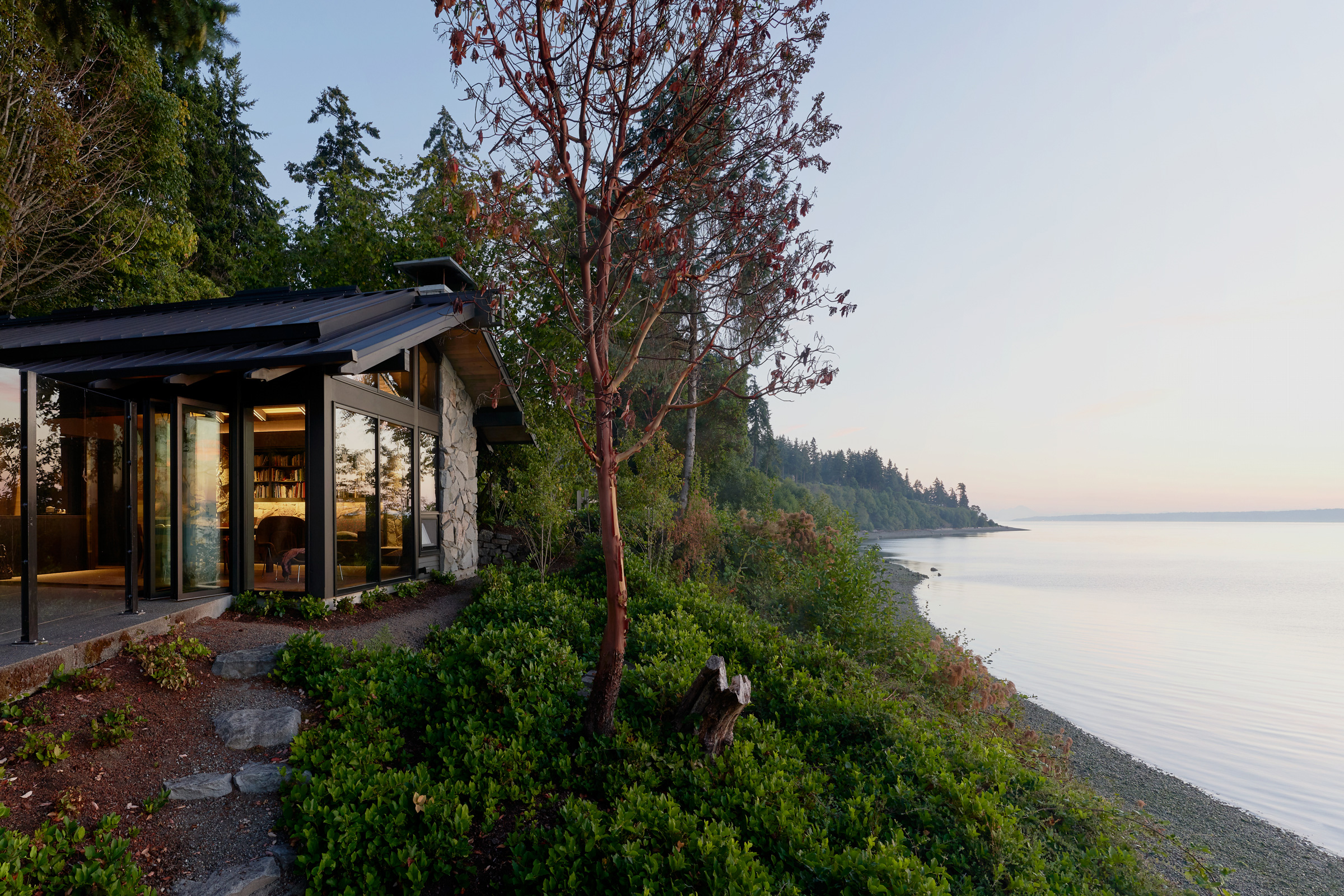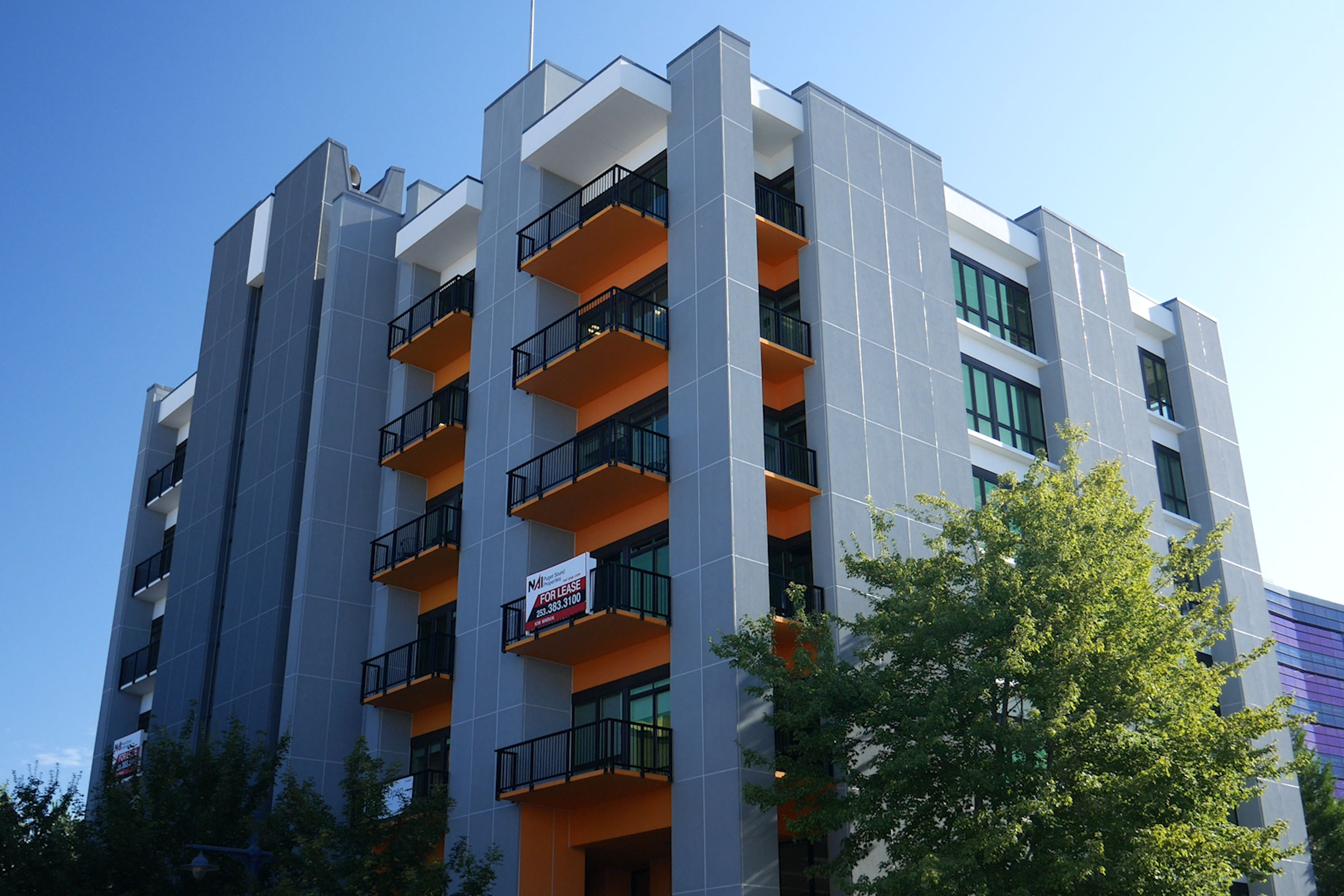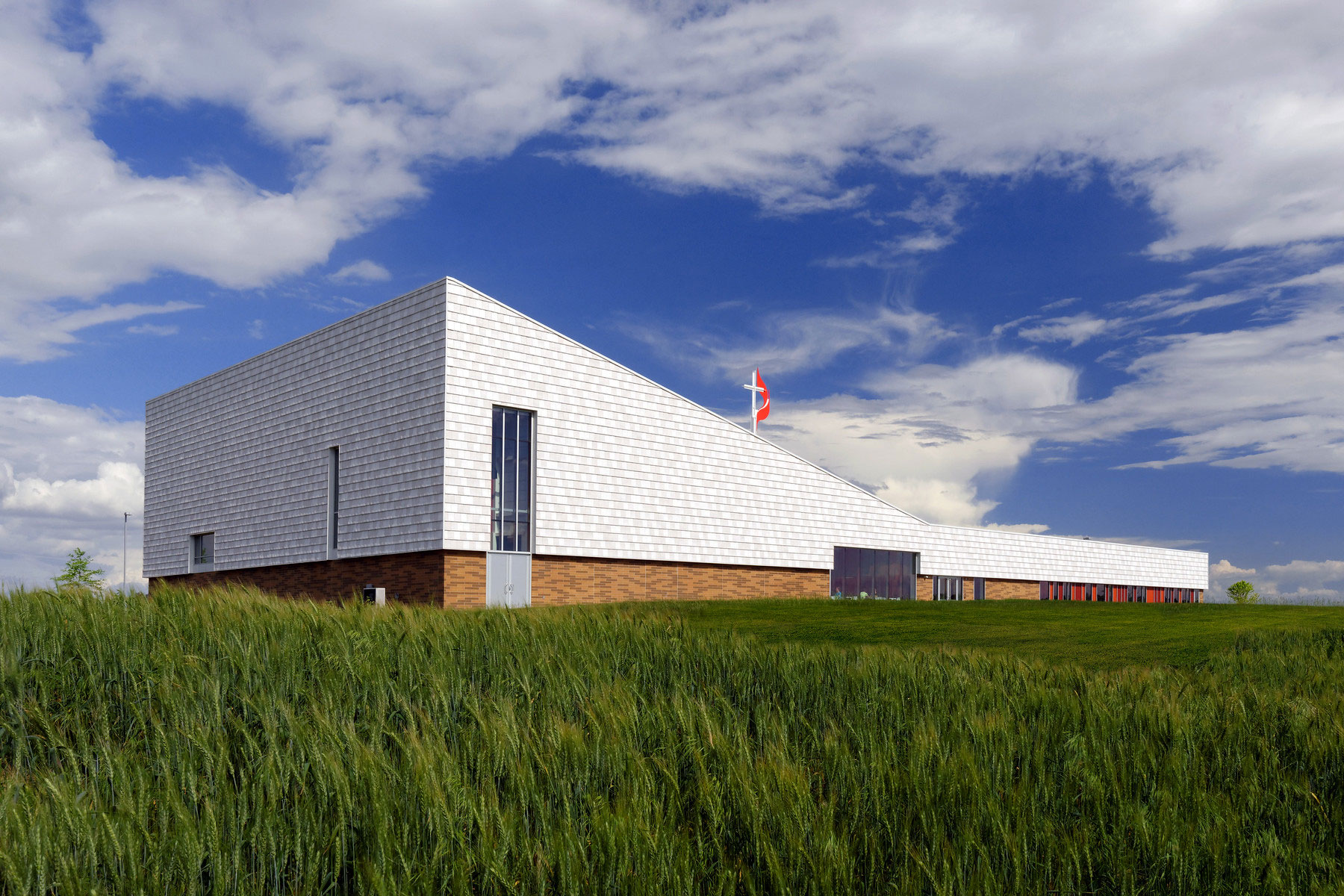Story at a glance:
- Every aspect of home design and construction, from a building’s orientation down to its fixtures, can be made more energy-efficient.
- Passive design features, such as building with cross-ventilation in mind, figure prominently in energy-efficient home designs.
- Multi-paned windows using low-e coatings are an easy way to reduce home heating and cooling by up to one-third.
As July 24th—2025’s Earth Overshoot Day—approaches, builders and designers know they have a major role to play in addressing environmental overshoot. Reducing materials and energy consumption in new builds and major renovations is critical.
Fortunately energy-efficient home designs often feature fewer or thinner building materials and energy consumption reductions. Let’s look at a few examples and list ways to design and build structures that promote energy efficiency.
Examples of Energy-Efficient Home Designs
Examples abound of energy-efficient home designs. Here are a few.
Casa Candela Villas, Tulum and Valladolid, Mexico
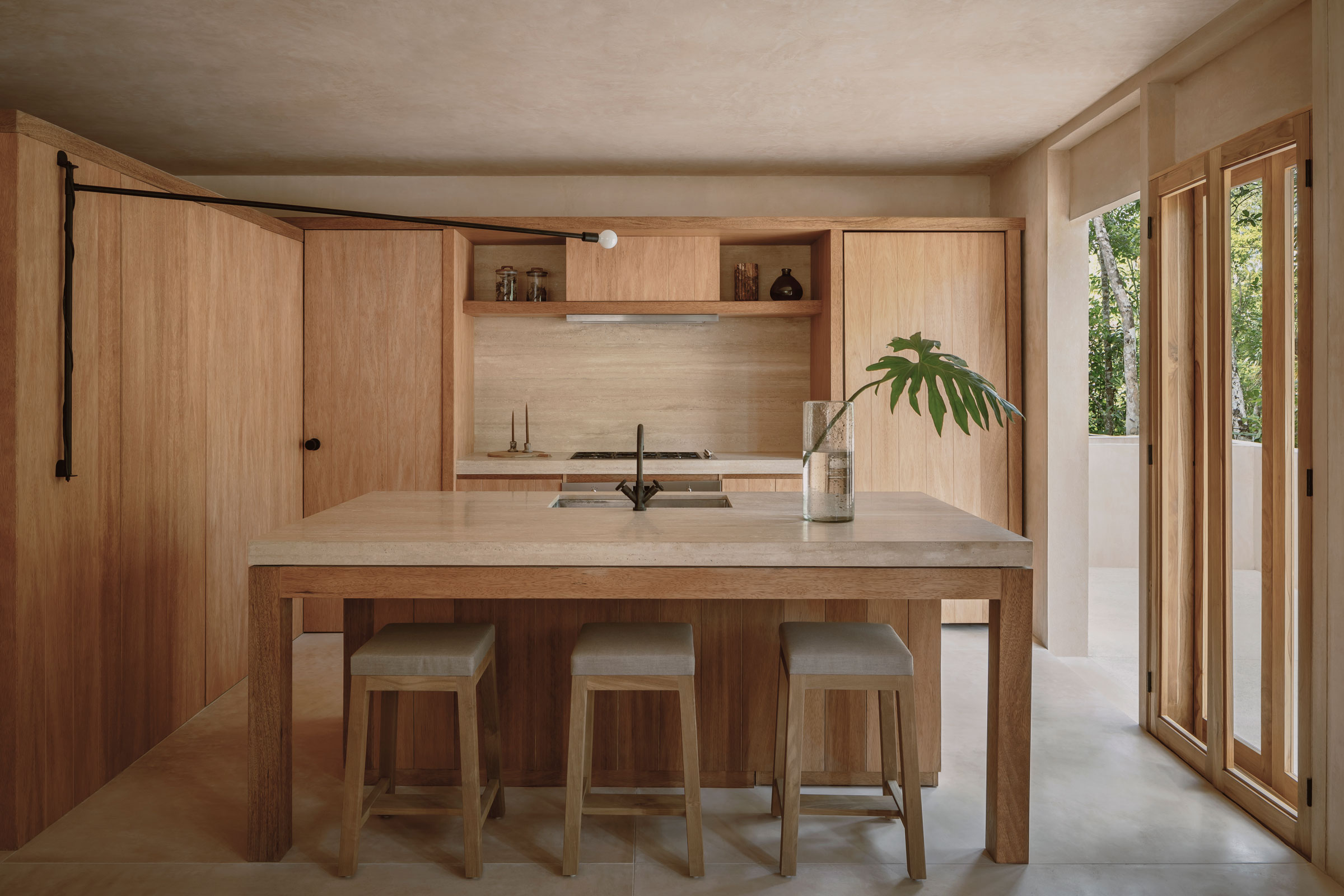
Inside Candela residences feature eco-friendly materials, energy-efficient walls and windows, and a structured layout to maintain a light carbon footprint. Photo by César Bejar
Located in the heart of the Yucatán, Casa Candela is well- ventilated with thick walls. Triple-paned windows significantly increase energy efficiency. Extensive tree coverage provides natural shade to limit cooling costs.
Architects used chukum, a water-resistant stucco material with Mayan roots. “It’s matching the environment where it is built,” says Jana Miháliková, who represents the property for Candela, on behalf of Nest Seekers International, in an earlier gb&d article.
Silver Rock Living Building Home, Bainbridge Island, WA

The Silver Rock residence on Bainbridge Island is a Living Building designed by McLennan Design. Photo by Emily Hagopian
After solar studies on the property completed as part of an overarching conservation ethic, architects at McLennan Design concluded that the Silver Rock Living Building Home should be “located in the far northeast corner of their property to have the best solar exposure and to preserve as many large, mature trees on the site,” Jason McLennan, principal at McLennan Design and the chief sustainability officer for Perkins&Will, wrote in a previous gb&d article.
In keeping with the notion to use local, natural materials, there is a two-foot thick rammed earth wall made from soil from the site and nearby quarries using “SIREWALL technology that features insulation in between two steel-reinforced wall sections, creating an energy-efficient and durable construction that is beautiful and creates a feeling of solidity and permanence,” McLennan says.
Other features that enhance energy efficiency include energy-efficient windows, high levels of insulation, an airtight construction, a heat pump and radiant heating in floors with a heat recovery ventilation system. As a non-combustion, all-electric home, there is no fireplace.
This home proves you can prioritize beauty and energy efficiency simultaneously.
Indiana Street House

The Indiana Street House sits on a small lot in the Pinkney Neighborhood of Lawrence, Kansas. It was designed and built by Studio 804. Photo by Gaffer Photography
Designed by Studio 804—a nonprofit consisting of graduate students from the University of Kansas School of Architecture & Design—under the guidance of Professor Dan Rockhill, Indiana Street House is a masterpiece in sustainability as well as energy efficiency. “Universities are all about ideas,” Rockhill previously told gb&d. “Studio 804’s big idea is putting the environment front and center. I wish more schools did this.”
Exterior walls possess a final R-value of 41.45, well beyond code. The HVAC system features energy recovery ventilation (ERV), meaning stale interior air is sent outside but not before it warms the incoming air. Overhangs, custom louvers, sunscreens, and high-performance glazing prevent building overheat during the summer. A rooftop solar array supplies 80% of the average Kansas home’s energy consumption. “The new owners really appreciate what they got in terms of sustainability, which is great,” Rockhill recounts.
Marietta High Performance Residence, Marietta, GA
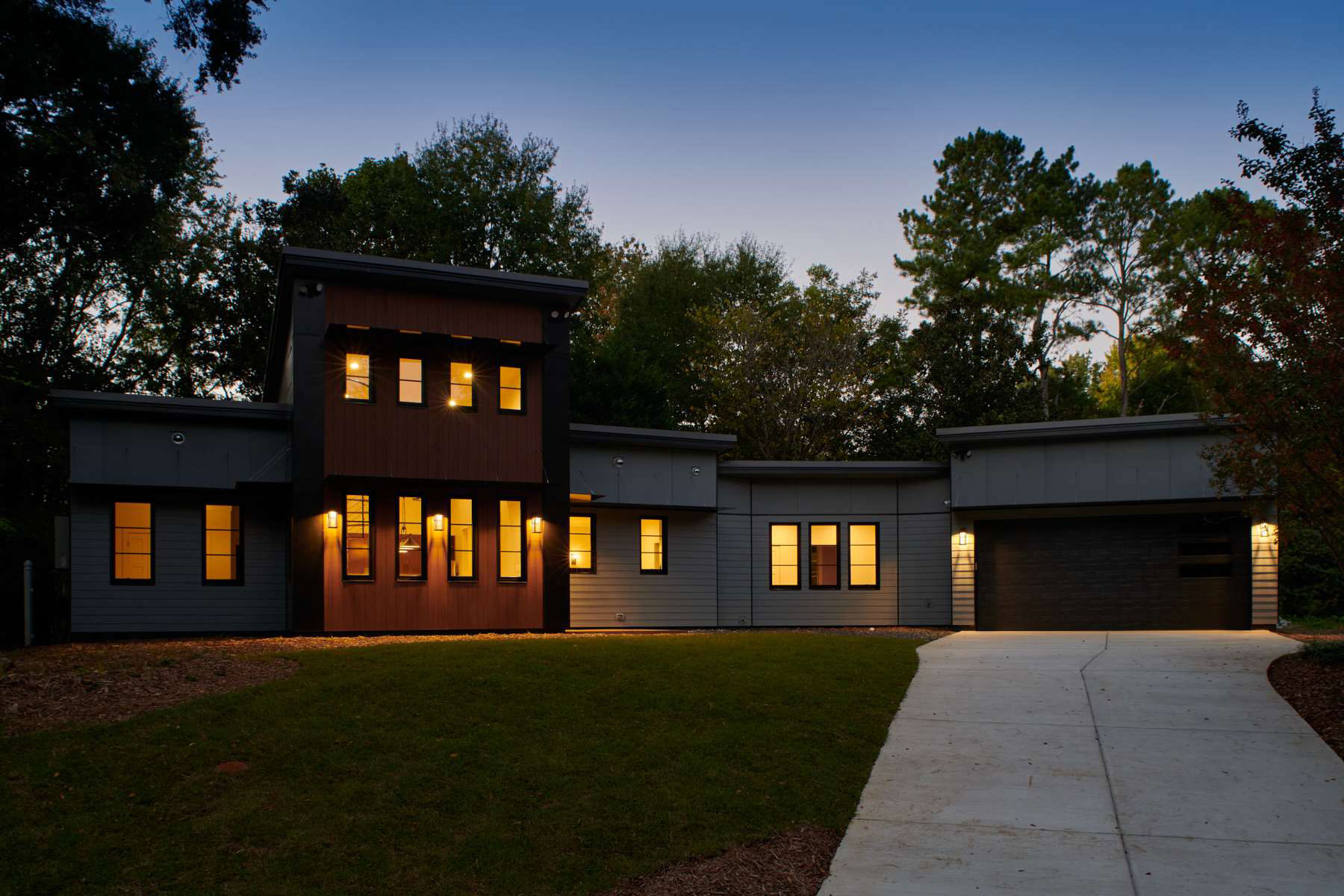
A contemporary three-bedroom house designed by LG Squared uses continuous stone wool insulation to keep the home a comfortable temperature while keeping energy demand low. Photo courtesy of LG Squared
When designing the Marietta High Performance Residence, LG Squared chose stone wool insulation because it has high thermal performance, prevents moisture and mold intrusion, and is fire- and insect-resistant. Plus, it’s rigid, making installation effortless. “It’s not load-bearing, but we can put it underneath the slab. It just takes care of everything that we need,” Chris Laumer-Giddens, who runs LG Squared, previously told gb&d.
“We tend toward ROCKWOOL on all of our projects. They’re making it more accessible to the residential construction market, which is where we spend most of our time. I’ve tried the other stuff, and it just doesn’t have the same performance and usability. We had insulated the home right before the summer broke, and as it started to get really hot, it stayed in the 60s inside the house,” Laumer-Giddens says. “I know it works, but it’s just fun to go in there and see how well it works. I’m so glad it feels exactly the way I explained it was going to feel or actually better.”
Loom House, Bainbridge Island, WA
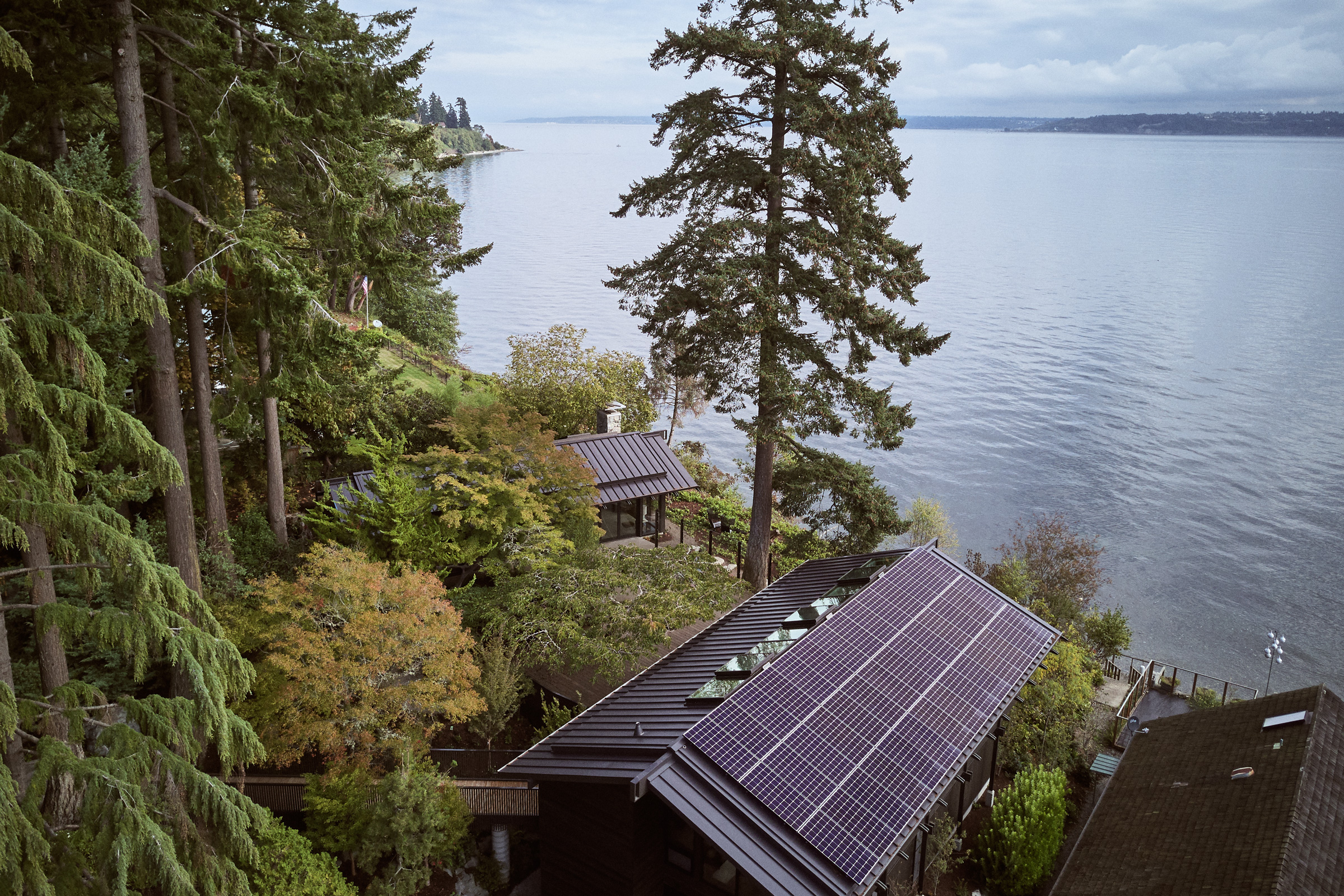
Loom House is located in the Temperate Conifer Forest biome in the Puget Sound Lowland off the Pacific Coast, and the homeowners wanted to reduce their environmental impact as well as give back to the community. Photo by Ben Schauland
Living Building (LB) certification can be challenging to achieve. Only a handful of homes have it. Loom House is the first residential renovation to do so. LB prides itself on energy efficiency. “The homeowners tell us it costs less to operate their property each month than their cell phone bills; Living Building homes are possible now, says Chris Hellstern, Living Building Challenge Services Director and architect with The Miller Hull Partnership, in an earlier gb&d article.
“The all-electric Loom House performs at 105% net positive energy using approximately 16,800 kWh of electricity while generating 17,600 kWh from the onsite photovoltaic system. This makes the home’s operational emissions zero, Hellstern adds.
Located in the mild-maritime Puget Sound climate, Loom House enjoys natural ventilation and uses radiant systems for added cooling and efficient heating. “A substantial upgrade to the building envelope supports these efficient systems and provides thermal comfort. Working closely with our contractor, Clark Construction, the team preserved the home’s original character by carefully removing and restoring the exterior siding and then replacing it. Insulation was added to the walls and roof and triple-glazed windows and doors were installed throughout,” Hellstern states.
Tips for Energy-Efficient Home Design
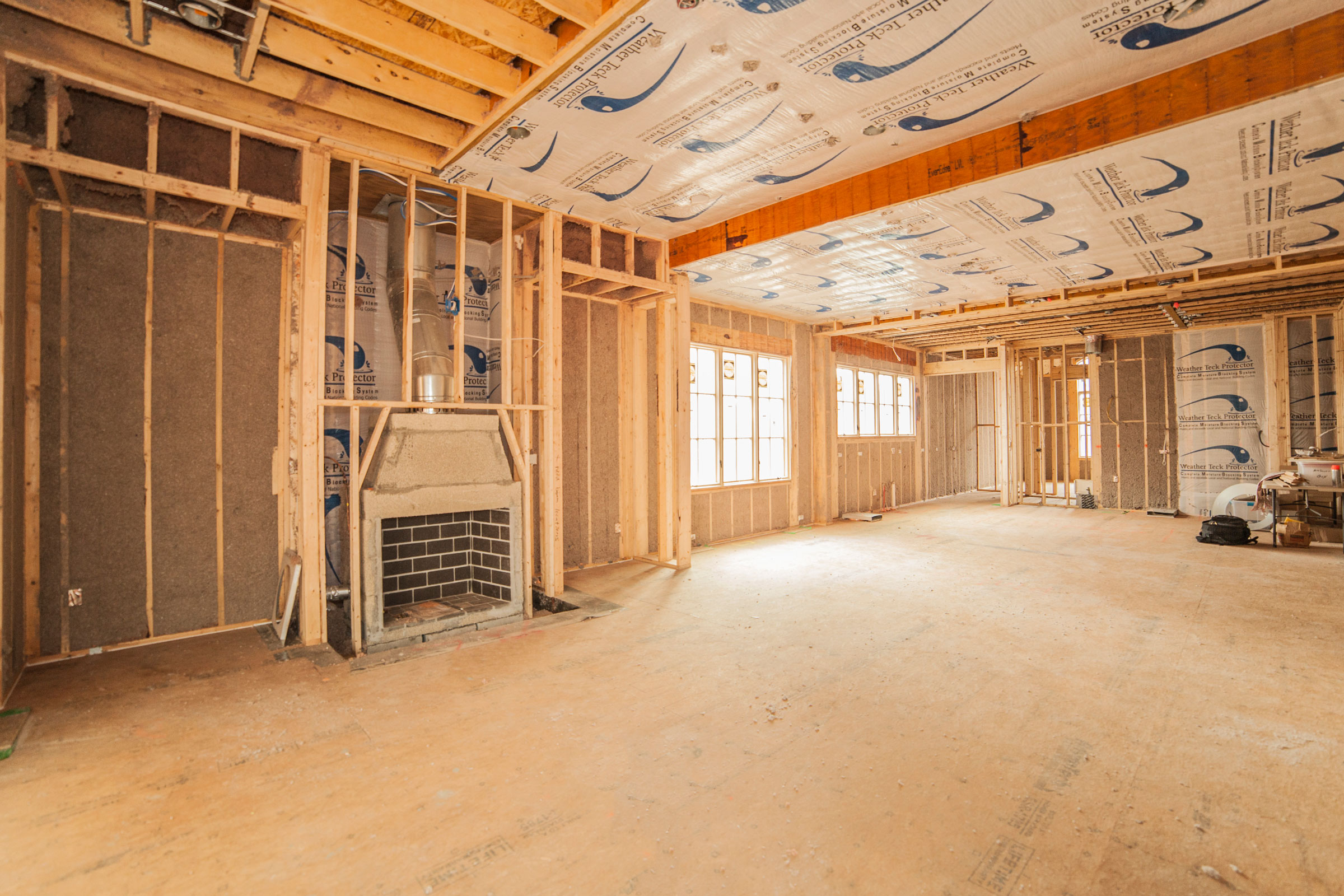
High-performance insulation is integral to designing energy-efficient homes. Photo courtesy of Greenfiber
According to home building expert Sam Rashkin, the building industry is on the precipice of major upheavals and energy efficiency innovations figure prominently. Here are some tips on designing and building energy-efficient homes so the upcoming disruptions won’t catch you by surprise.
1. Using circular design principles, choose a combination of natural insulating materials that additively provide a high R-value that is constant during weather extremes unlike some popular synthetic products. For example, Greenfiber’s plant-based wall insulation is recycled paper.
“Greenfiber uses a low-energy manufacturing process that results in materials with the least-embodied energy of most major insulation products. The production process generates little no waste or byproducts because we leverage recovered material to start with,” Jason Todd, the director of market development and building science at Greenfiber, previously told gb&d.
Other materials to try in isolation or in some combination include cork, mineral wool, and wool.
2. Anticipate power grid failures due to overuse during temperature extremes or severe storms by installing solar plus storage on new builds and major renovations when solar studies show building orientation is appropriate.
“To get the most out of solar panels you need proper planning, design, and installation. The property needs to be inspected to determine the sun’s path and potential shade structures,” Ralph Alvarado, manager for PV Products at Q Cells—one of the leading producers of highly-efficient solar panels—previously wrote for gb&d. “The roof needs to be properly configured for optimal energy collection.”
3. Build all-electric homes using EnergyStar products with the highest energy efficiency.
4. Multi-pane windows with low-e coatings are essential components of energy-efficient homes.
5. Design to make natural cooling easy with cross-ventilation, overhangs, recessed windows, and sunscreens.
6. Landscaping with numerous large trees, shrubs, and plants to provide shade and create a cool microclimate around the home’s perimeter.

